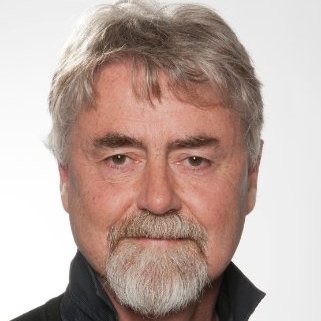BS2025 / Speakers / Michel Donn

Associate Professor Michael Donn
Wellington School of Architecture
Presenter bio
Michael Donn is an Associate Professor in Building Environments at the Wellington School of Architecture, Victoria University of Wellington. His research interests are centred around the believability of calculations of the likely performance and environmental impact of buildings.
He has been involved in IBPSA since the Adelaide conference in 1993. The topic of his three papers at that conference set the stage for all his subsequent research: “The Application of Radiance …”; “Multi-Disciplinary Views To An Integrated Simulation Environment”; and “The Creation Of Weather Data Files …”. The focus on dynamic simulation at all stages in the design process, the reduction of the friction between architects’ models and those of analysts, and a focus on informing designers how their buildings might perform in reality were already established. For example, the weather data paper noted the importance of data in the service of design: not just “typical” but extremes such as “hot and windy” or “cool, calm and sunny” were proposed.
By 1999 in Kyoto, this interest had morphed into a general concern about Quality Assurance (QA) processes in dynamic simulations focused on questions that designers pose. By then, with 20 years experience auditing wind tunnel test reports, the QA was about all energy and mass flows associated with building performance. This century, the focus has increasingly been on QA while dynamically sketching building performance. Pre-calculating a set of “typical” buildings to allow the architect to “understand” the implications of their design had been found wanting. Pre-calculation suffers from the same problem that we now face with AI: if the user does not understand the underlying assumptions in the database they are mining for design insights, then how can they use the information appropriately?
At Building Simulation 2025, Michael will continue to develop the theme of QA in building performance simulation. His talk will explore the issue of appropriate use of building performance simulation across a range of fields. Informed by nearly 3 decades of using simulation in the teaching of architecture and building science students, the topic might best be phrased as: “have we progressed beyond Seattle in 1985? (Classes of over 300 students now use Radiance and EnergyPlus to explore design ideas dynamically).
He suggests we need to ask: is our modelling focus of use in design? Have our legitimate concerns about modelling users informatively, confused accuracy and precision? Have we provided yet a means for designers to understand and sketch quickly the interactions between the city, their site, and their design ideas? In optioneering, what difference in performance can we suggest to the design team is significant?
Presentations at Bs2025
The Useful Lie: QA in Building Performance Simulation and the Quest for Code Compliance
At Building Simulation 2025, Michael will continue to develop the theme of QA in building performance simulation.
Room 1
August 27, 9:45 am-10:30 am
